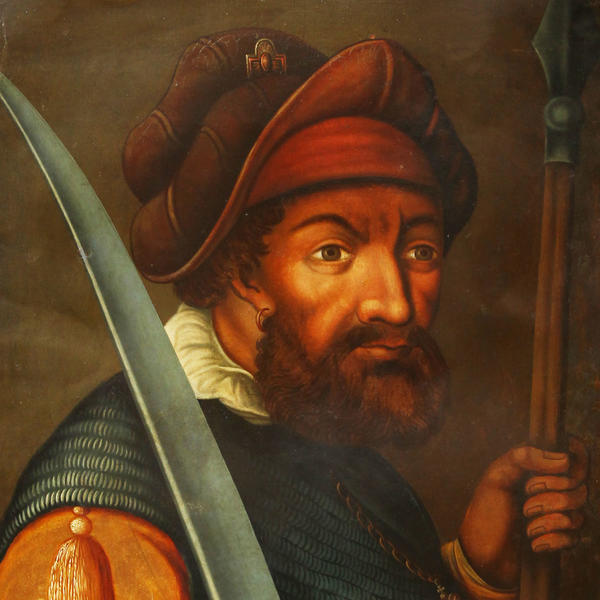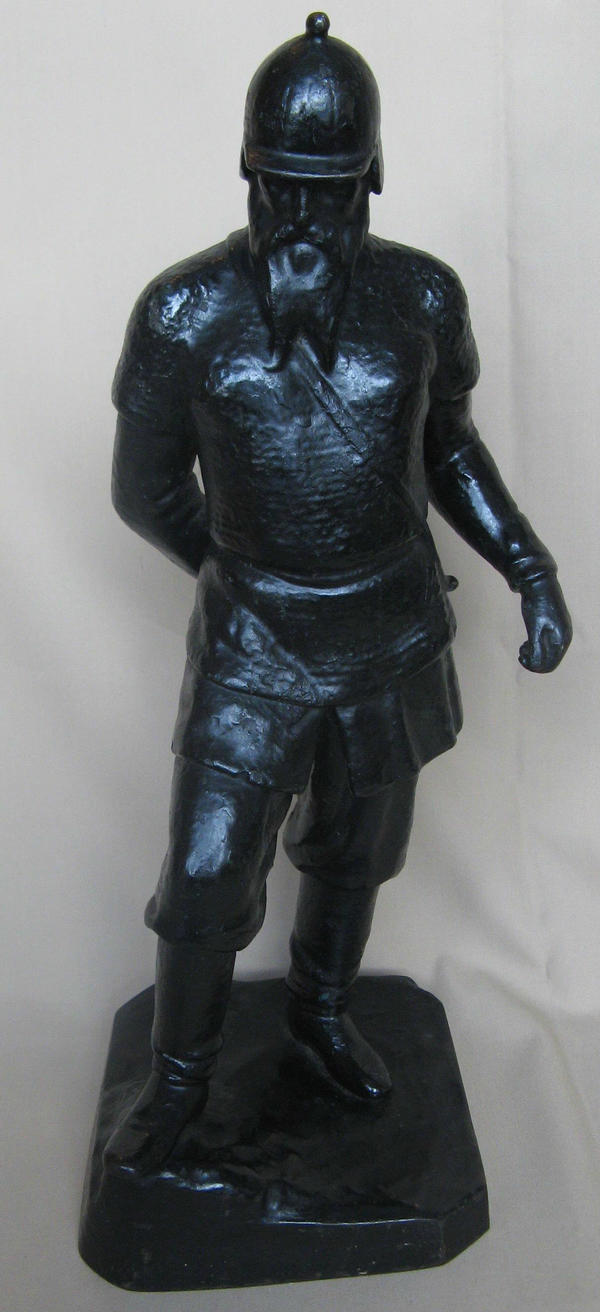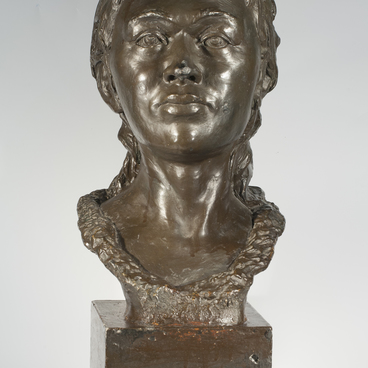The portrait of Yermak, the heroic Russian conqueror and explorer, was painted in 1753 in one of the workshops of the city of Tobolsk. The painting is made on a sheet of Ural iron. The author of the portrait is unknown. Similar images of the famous Cossack ataman were very popular since the mid-18th century. They hung in almost every living room in the homes of Siberian officials and merchants.
1 / 2
Yermak Timofeyevich – the Conqueror of Siberia
Время создания
Tobolsk, 1753
Размер
165х70 cm
Техника
oil on iron
17
Открыть в приложении#7
Unknown Artist
Yermak Timofeyevich – the Conqueror of Siberia
#8
#9
There are no lifetime images of Yermak, only his description in the Remizov Chronicle of the late 17th century is extant:
‘Very courageous, and humane, and sightly, and full of wisdom, flat-faced, black-bearded, of middle height, and lean, and broad-shouldered’.
#6
Relief. Ermakov swans. Author Kochutin L.V. 1972 Chamotte, smalt, glaze. SOKM
Yermak was born in 1585. According to one legend, the conqueror of Siberia was a native of a Cossack stanitsa on the Don, other sources say that he was from the banks of the Chusovaya River. He became known in history as Yermak, although his full name is Yermolay Timofeyevich. He also had the nickname Tokmak, as wrote the author of the Pogodin Chronicle. Only noble people or foreigners bore second names, but everyone had a nickname.
#5
Yermak was the ataman of one of the Cossack squads that was called upon to protect the Russian possessions in the Urals from the raids of the Siberian Khan and his vassals. There were 450 people in the squad. In the late 1570s, the Cossacks reached the Chusovaya River. These were the possessions of the Stroganov brothers – large salt miners and landowners. The squad led by Yermak set out to march behind the Stone Belt (as the Ural Mountains used to be called). There, they defeated several troops of Kuchum Khan, the leader of the Siberian Khanate, and Yermak entered his capital, the city of Siberia. Learning of this, Tsar Ivan the Terrible richly bestowed the Cossacks and sent them reinforcements. In August 1584, Kuchum attacked the sleeping Cossacks with a small detachment, and they all died, including Yermak. According to legend, he rushed into the river and drowned, failing to reach his boat.
Sculpture. Yermak. Early 20th c. Kasli Factory. Cast iron, casting, painting. SOKM.
#10
There were few Russian troops left, so the city of Siberia had to be surrendered to Kuchum. But soon new tsarist troops came to Siberia, and the region was finally subdued. Yermak remained in people’s memory as a heroic character and the conqueror of Siberia for the Russian tsardom. In the 1753 portrait, he is depicted in a light brown caftan and chain mail, which, according to legend, were presented to him by Ivan the Terrible. At the bottom of the painting, the artist left an inscription: “Yermak Timofeyevich, the conqueror of Siberia, was painted in May 1753”. The portrait still preserves the features of the early genre of Russian painting –parsuna. The portrait likeness in the parsuna was transmitted roughly, and only the inscription made it possible to determine the identity of the portrayed person.
#11
The 1753 portrait of Yermak entered the collection of the Museum of History and Archeology of Ural on 16 June 1909 from a resident of Yekaterinburg by the name of Slobodchikova. The picture became one of the earliest paintings in the museum collection.
#12
O.E. Kler Sverdlovsk Regional Ethnographic Museum
читать дальшескрыть
00:00
00:00
1x
Yermak Timofeyevich – the Conqueror of Siberia
Время создания
Tobolsk, 1753
Размер
165х70 cm
Техника
oil on iron
17
Открыть в приложении
Поделиться



